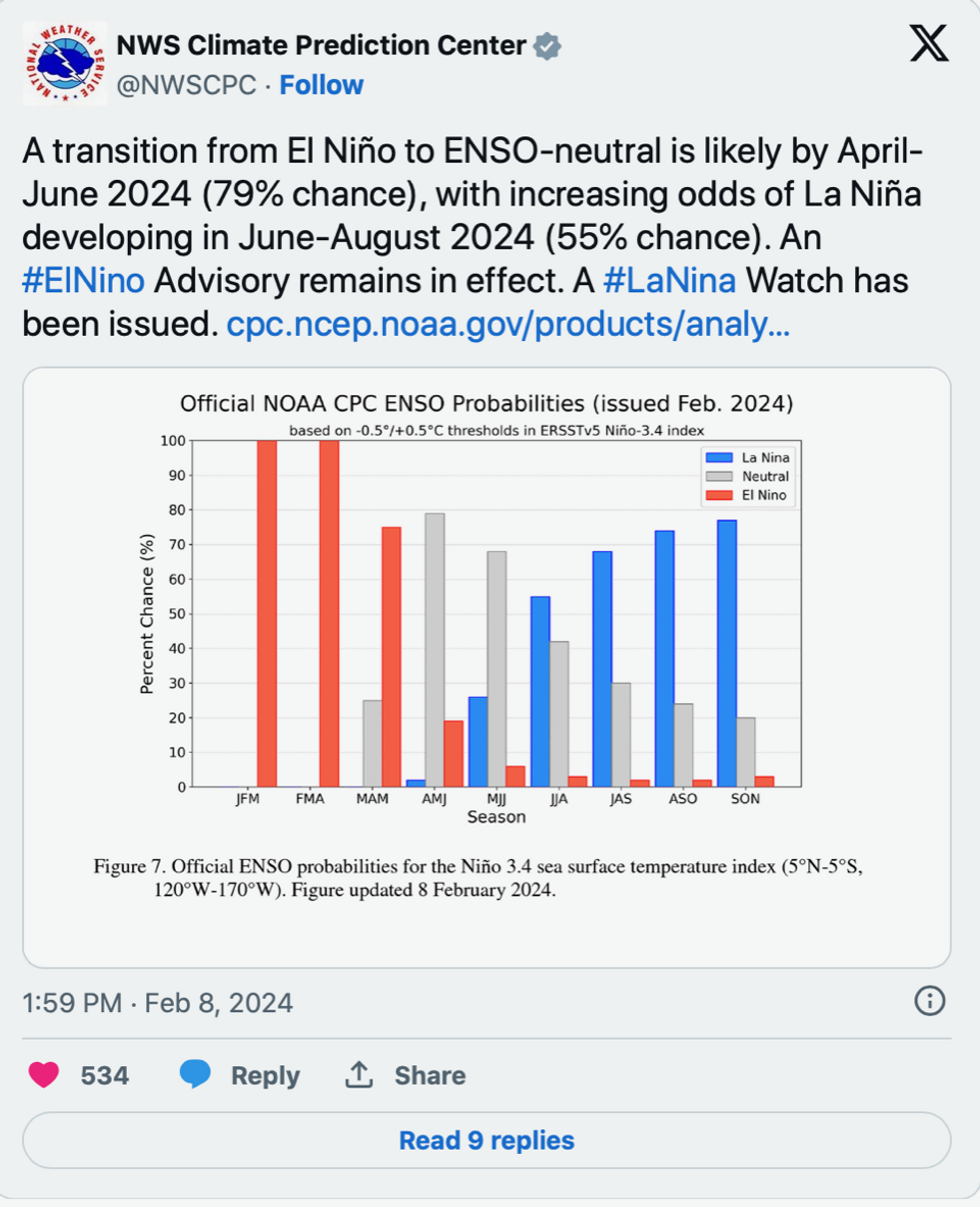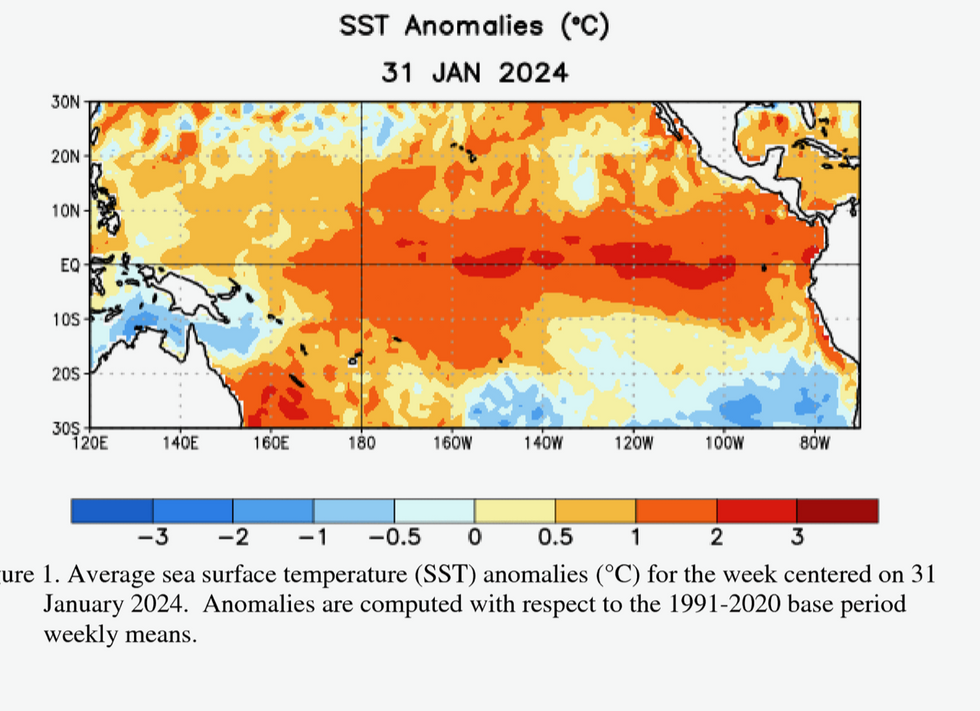La Nina’s effect on US weather
National Oceanic and Atmospheric Administration (NOAA)/Climate.gov
A La Nina transition from El Nino is almost certain from next month according to meteorologists
Don't Miss
Most Read
Trending on GB News
Ocean temperature changes predicted to start this during spring could ‘significantly’ increase the risk of severe weather in the US.
Meteorologists have in the past week confirmed a La Nina transition from El Nino is almost certain from next month.
An unusually powerful El-Nino warming of ocean waters around South America, which set in last year, is expected to end next month.
The US Climate Prediction Centre has issued an ‘El Nino Advisory’ and ‘La Nina Watch’ stating a transition to La Nina is possible before August.

Climate prediction centre forecasts change to La Nina
X
This could increase the risk of storms during summer and a more active autumn hurricane season next year, experts warn.
Weather Channel meteorologist Jonathan Erdman said: “La Nina is forecast to develop later this year, and while it is not as well known as El Nino, it can have significant impacts on the weather in the US.
“Generally speaking, winters can be wetter and colder than average in the Pacific northwest, and colder in the Northern Plains.
“Warmer and drier-than-average winters typically happen in the South, especially from Texas into the Carolinas and Florida, and this could open the region to drought the following spring into summer.
“If La Nina persists into the following spring, it can lead to more frequent, widespread episodes of severe weather, particularly in the Plains states.”
One effect could be to drive the hurricane season by jolting the circulation of prevailing winds across the Pacific.
These winds drive warmer water into the oceans of the western Pacific, thrusting warm, unstable air into the atmosphere.
LATEST DEVELOPMENTS:

Currently, above average sea surface temperatures remain around the South American coast
National Oceanic and Atmospheric Administration (NOAA)
La Nina can reduce the amount of ‘wind shear’, currents of opposing winds, which can act to disrupt hurricane formation and calm the Atlantic basin.
Lower wind shear combined with heat and moisture in the atmosphere can end up driving higher numbers of hurricanes, Mr Erdman warned.
He said: “In general, La Nina Atlantic hurricane seasons have less wind shear that can otherwise rip storms apart, and rising, unstable air that is more conducive for thunderstorms, the building blocks of tropical storms and hurricanes.”
The switchover from El Nino to La Nina could start influencing the US weather as soon as this summer, meteorologists say.
With the right pressure patterns, the changing sea temperatures could bring hotter conditions and storms through the coming months.
Jim Dale, meteorologist and US weather correspondent, said: “El Nino is still getting weaker, and there could be a change into La Nina.
“If the synoptics are in place, with the general effects of climate change, I would suggest there is the risk for some very uncomfortable conditions this summer and the risk of storms which form in unstable atmospheric conditions.”
Sea temperatures around the equatorial Pacific have been seen to fluctuate, with changes in the atmosphere above the ocean also reported.
Government meteorologists and oceanographers now have some certainty of La Nina developing this summer.
The National Climate Prediction Centre reports a 79-per-cent chance of a transition starting next month.
A spokesman said: “The most recent [data] indicate a transition to ENSO-neutral during spring 2024, with La Niña potentially developing during summer 2024.
“Even though forecasts made through the spring season tend to be less reliable, there is a historical tendency for La Niña to follow strong El Niño events.
“The forecast team is in agreement with the latest model guidance, with some uncertainty around the timing of transitions to ENSO-neutral and, following that, La Niña.
“Even as the current El Nino weakens, impacts on the United States could persist through April 2024.”








